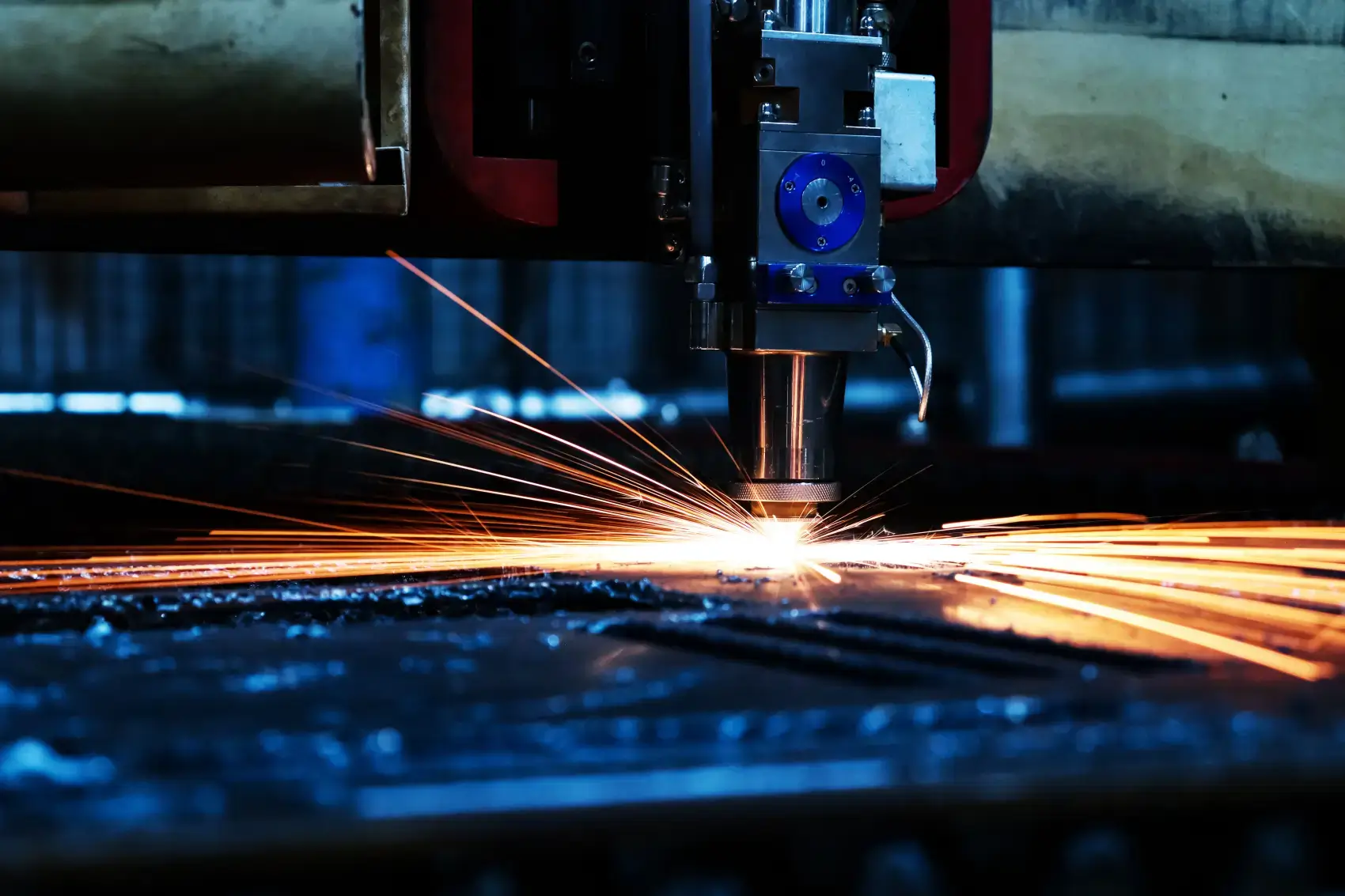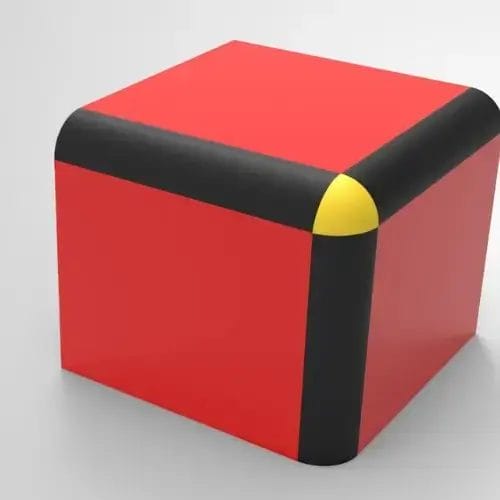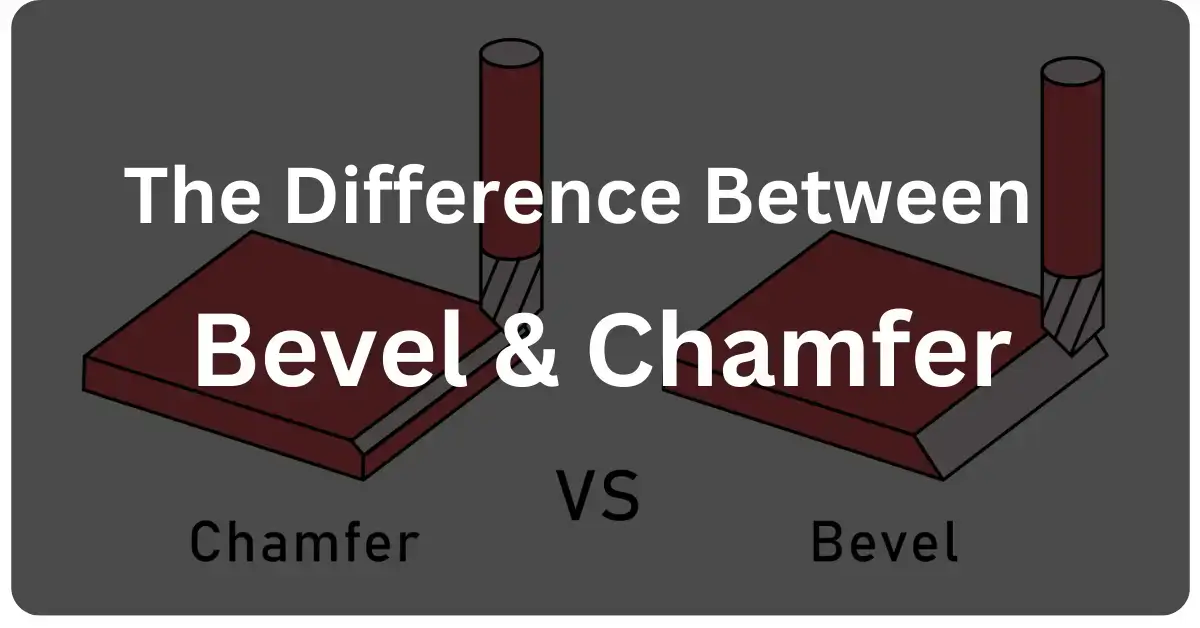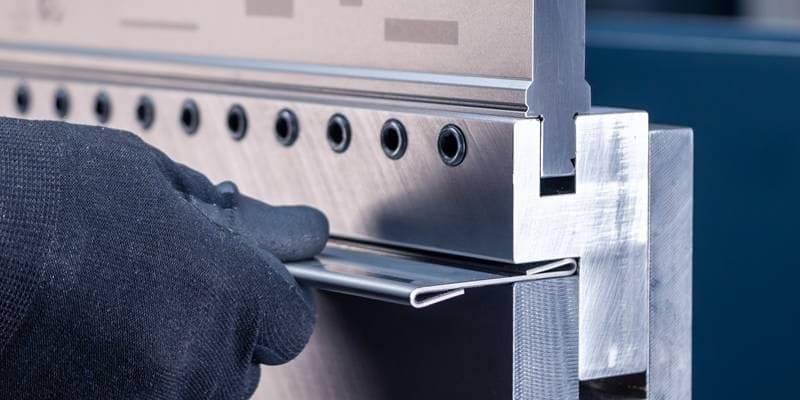Metal part manufacturing is critical for various industries, from construction to automotive. Metal manufacturing uses techniques like forming, joining, molding, casting and machining.
Sheet metal forming takes a sheet of metal and shapes it by applying force. It plastically deforms the material into the desired form using processes like cutting, bending, pressing and more.
In this blog-post, we’ll explore materials used in forming and look at various forming techniques and detailed forming processes. We’ll also discuss the pros and cons of metal forming.
First up, let’s discuss some common metals used in sheet metal forming and their properties. If you are a machininig beginner, feel free to check this basic guide: What Is Sheet Metal Fabrication.
Materials Used in Sheet Metal Forming
Sheet metal forming processes use many materials. Every material has unique properties that make it suitable for particular uses.
| Material | Grade | Yield Strength (MPa) | Ultimate Tensile Strength (MPa) | Elongation (%) |
| Low-Carbon Steel | AISI 1018 | 370 | 440 | 25-28 |
| Low-Carbon Steel | AISI 1020 | 350 | 420 | 25 |
| Aluminum | 1100 | 34 | 90 | 35-45 |
| Aluminum | 3003 | 145 | 215 | 25-30 |
| Aluminum | 6061 | 276 | 310 | 12-17 |
| Stainless Steel | 304 | 205 | 515 | 40 |
| Stainless Steel | 430 | 275 | 450 | 22 |
| AHSS (Dual Phase) | DP 600/980 | 340-420 | 600-980 | 12-20 |
| Titanium | Ti-6Al-4V | 880-1100 | 950-1170 | 10-14 |
| Copper | C11000 (ETP) | 69 | 220 | 45 |
| Brass | C26000 | 195 | 330-365 | 35-68 |
Table 1: Materials used in sheet metal forming.
When selecting sheet metal materials for forming, the following factors are considered.
- Formability – Generally, materials with higher elongation percentage have better formability
- Cost-effectiveness – Mostly, low-carbon steels are economical choice for general purposes.
- Strength needs – AHSS and titanium alloys give higher strength-to-weight ratios for demanding uses.
- Corrosion resistance – Stainless steels, aluminum alloys and titanium have superior corrosion resistance over carbon steels
- Specific properties – Copper alloys for conductivity, aluminum for lightweighting, stainless for food-grade needs are usually used.
Common Types of Sheet Metal Forming Processes
Cutting Methods
Sheet metal forming uses various cutting techniques to shape metal sheets into desired forms. Here are the main cutting methods for metal forming & finishing:
1. Laser Cutting
This high-accuracy method uses focused laser beams to melt or vaporize material. It is ideal for intricate shapes and offers fast cutting speeds up to 20-70 m/min for mild steel sheets. It can achieve very tight tolerances of ±0.1 mm.
2. Plasma Cutting
This method works for thicker materials (up to 160 mm). It uses ionized gas to melt metal. One of its properties in being cost-effective for medium precision needs. It has cutting speeds ranging from 500-6000 mm/min for steel sheet forming.
3. Waterjet Cutting
Waterjet Cutting uses high-pressure water (up to 90,000 psi) mixed with abrasives to cut materials without thermal distortion. It is suitable for various materials and can achieve tolerances of ±0.1 mm.
4. Shearing
Shearing is used for straight cuts in metal sheet forming offering high-speed production. It can handle sheet thicknesses up to 10 mm and achieve fast cutting speeds depending on material.
Read More: How To Cut Stainless Steel Sheet?
Metal Forming Methods
Sheet metal forming uses various techniques for forming metal sheets into desired forms. Here are some key methods:
1.Bending
It involves deforming metal around a straight line. Edge bending produces up to 90° bends, while V-bending can create angles from 30° to 179°.
2.Deep Drawing
It uses a punch to force sheet metal into a die cavity. The drawing ratio is typically 1.6-2.2. This method is great for making cans, cups and car body panels.
3.Stretch Forming
Stretch Forming bends and stretches sheet metal over a die to create large contoured parts, commonly for aerospace. It produces intricate shapes with 15-20% strain for low carbon steel and 2-8% for aluminum.
4. Roll Forming
Roll Forming continuously bends using 5-30 stations at 10-60 m/min speed for steel and 150 m/min speed for aluminum. It’s perfect for long, constant cross-section parts like gutters.
5. Hydroforming
A method that uses high-pressure fluid to form complex shapes. With 15-60 second cycle times, it’s ideal for car unibody structures.
Joining Techniques
Assembling sheet metal components often requires joining methods. Most common are welding, riveting, fastening.
1.Welding
It permenently joins sheet metal, especially structural parts. MIG (Metal Inert Gas), TIG (Tungsten Inert Gas) and spot welding are common welding techniques used based on material thickness and precision needs. MIG suits thicker sheets (>1.5mm). TIG offers control for thinner (<1mm). Spot efficiently joins overlapping sheets at points with 000-15,000 amps welding currents.
2.Riveting
It uses permanent mechanical fasteners to secure sheets. It is known for strength in automobile and aerospace sectors. Pull riveting and self-piercing (SPR) are common. SPR can join dissimilar materials with different melting points and thicknesses up to 3mm.
3.Fastening
Removable fasteners like bolts/screws allow easy disassembly/reassembly. It is ideal for maintenance or modifications with screw sizes typically M2-M8 for sheets.
Detailed Workflows in Sheet Metal Forming
Sheet metal forming processes involve several critical steps. These include designing & engineering, tool setup, forming operations, and quality control. To produce high-quality parts and run manufacturing operations efficiently, these workflows must be optimized.
Design & Engineering for Sheet Metal Fabrication
1.Software
Advanced CAD/CAM software like TruTops Boost, BySoft and CADMAN helps engineers design complex sheet metal parts and generate CNC code for fabrication. It allows seamless integration between design and manufacturing.
2.FEA
Finite Element Analysis (FEA) simulates forming processes. It predicts material behavior, optimizes tool design and minimizes defects. By considering material properties like friction, and temperature, it accurately models complex operations. It helps reduce costly trial-and-error iterations.
3.DFM
Applying Design for Manufacturability (DFM) principles ensures efficient production. Guidelines include standard bend radii, avoiding tight tolerances (<±0.1mm), minimizing bends and optimizing for easy assembly. DFM cuts production costs and boosts quality.
Tooling and Die Design
1.Die Components
A common sheet metal forming die has a punch, die, and stripper plate. The punch presses the sheet metal into the die cavity to form the shape. The stripper plate removes the finished part from the punch. Properly designing and aligning these parts is key for consistency.
2.Tool Steel Selection
Picking the right tool steel grade (e.g. D2, A2, M2) and heat treatment (hardening, tempering) ensures die durability and function. Steels with high wear resistance (>60 HRC) and toughness (>20 J) are best for demanding uses. Coatings like nitriding and PVD can further increase surface hardness and reduce friction.
3.Die Maintenance
Regular cleaning, lubricating and inspecting prevent early wear and ensure consistent part quality. Techniques like laser cladding and EDM can fix worn or damaged dies, extending their life.
Forming Process Steps
1.Blank Preparation
First, the sheet metal blank is cut to the needed size and shape by shearing, laser cutting or punching.
2.Lubrication
Next, lubricants are put on the sheet metal to reduce friction, prevent tool wear, and better quality. Applying the right lubricant amount (0.5-2 g/m2) and type is key.
3.Positioning and Clamping
The prepared blank is then positioned and clamped securely in the die for accurate, repeatable results. Hydraulic or pneumatic clamps with pressures up to 50 MPa are often used.
4.Forming Operation
Next, actual forming process (bending, drawing, stamping) is done using the right tools and equipment. The sheet metal is plastically deformed into the desired shape by applying force (few kN to 50,000 kN).
5.Part Removal and Inspection
After forming, the part is removed from the die and inspected for dimensions (±0.1mm), surface quality (Ra <1.6 μm), and defects like cracks or wrinkles.
Quality Control Measures
1. In-Process Monitoring
Sensors for force, sound, and vision identify process issues and prevent defects in real-time.
2. Non-Destructive Testing
Methods like ultrasound, x-ray, and eddy current find internal flaws without damaging the part.
3. Statiscical Process Control
SPC tools monitor stability, spot variation sources via control charts and capability analysis.
Applications of Sheet Metal Forming
Sheet metal forming processes are commonly used in various industries to make components with specific sizes, properties and shapes. Some applications of sheet metal forming are:
Automotive
Body panels and structural parts are produced by stamping, deep drawing and hydroforming.
Aerospace
Fuselage sections, wing components, engine parts are made from aluminum alloys and titanium using forming techniques.
Construction
Roll forming, bending, punching create roofing panels, HVAC ductwork, architectural elements.
Electronics
Forming makes casings, heat sinks and EMI shielding components for electronic devices.
Advantages and Challenges of Sheet Metal Forming
When it comes to manufacturing, sheet metal forming is a game-changer. Let’s explore some of key advantages of sheet metal forming process and some challenges one faces during the process.
Benefits:
- High production rates allow meeting tight deadlines and satisfying customers.
- Minimal material waste from precise cutting and forming means cost savings.
- Can create complex part shapes impossible with traditional machining.
- Better mechanical properties and durability of parts through work hardening during forming.
Challenges:
- Springback can impact accuracy. But it can be mitigated with proper die design and compensation methods help.
- Deep drawing can cause wrinkling and tearing. But we can reduce this through process refinement and lubrication.
- Tool wear affects part quality and maintenance costs. Using the right tool materials, coatings and regular upkeep helps here.
- Sheet metal material differences can reduce consistency. Controlling this through supplier collaboration and robust quality measures is key.
Yijin Hardware: Your Trusted Sheet Metal Maker
Yijin Hardware is among the pioneers of sheet metal forming service providers in China. We provide comprehensive metal forming & finishing services, using our 20+ years of experience. We specialize in many sheet metal fabrication techniques:
- Laser cutting: Up to 50 mm thick, 4000 x 6000 mm max size
- Water Jet Cutting: Up to 300 mm thick, 3000 x 6000 mm max size
- Bending: Up to 50 mm thick, 4000 x 6000 mm max size
- Plasma cutting: Up to 50 mm thick, 4000 x 6000 mm max size
We use cutting-edge equipment for sheet metal fabrication. Among these equipments are 30 Laser Cutting Machines, 10 CNC Bending Machines and 20 CNC Punching Machine. Our advanced technologies and CAD/CAM software enable efficient design and production of sheet metal parts.
At Yijin, we implement rigorous quality control like non-destructive testing and in-process monitoring. Our commitment to deliver detail-oriented parts with tolerances as low as ±0.010 mm makes us a reliable partner for varied needs.
Want to customize sheet metal parts? Contact experts at Yijin Hardware today.

 info@yijinsolution.com
info@yijinsolution.com (+86) 188-2253-7569
(+86) 188-2253-7569







